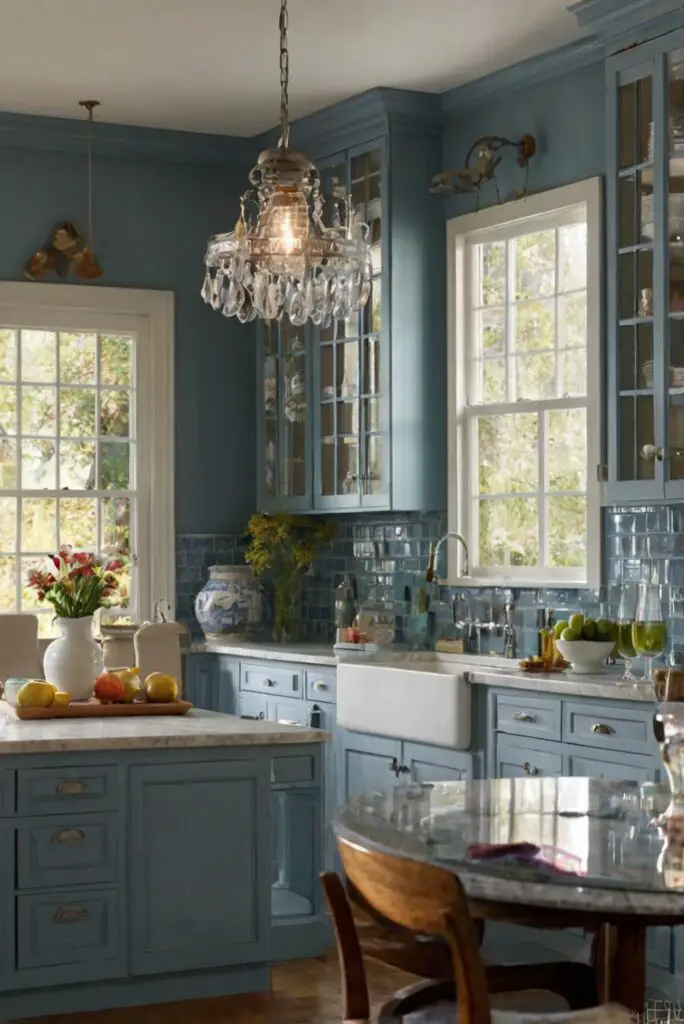Discover the key to seamless interior design transitions! Learn how color can unify your kitchen and adjacent spaces effortlessly.
How can you create a harmonious flow between your kitchen and adjacent rooms with color?
Create a harmonious flow between your kitchen and adjacent rooms by utilizing a cohesive color scheme throughout the space. Start by selecting a primary color for the kitchen and then use shades from the same color family in the adjoining rooms. This will create a seamless transition between the areas. Consider using accent colors in decor elements like rugs, curtains, or throw pillows to tie everything together. It’s also important to ensure that the color palette complements the overall style and mood you want to achieve in your home. Space planning and careful selection of home paint colors will help you achieve a visually appealing and well-coordinated living space.
Creating a harmonious flow between your kitchen and adjacent rooms with color is key to achieving a cohesive and inviting space in your home. Here are some tips and ideas to help you seamlessly connect these areas:
1. Consider the overall color palette:
My Lovely Spring Paint for 2025
Ready for a Spring Makeover? Explore the Freshest 2025 Paint Trends!
White Sage/Green SW Pistachio green Soft blue Honeysweet/Orange Pink Sugar Sage Tint BMAs an Amazon Associate, I may earn a commission from qualifying purchases at no extra cost to you.
When creating a color scheme for your kitchen and adjacent rooms, it is important to consider the overall color palette of your home. Choose colors that complement each other and create a cohesive look throughout the space. Selecting colors that are already present in the adjacent rooms can help tie everything together seamlessly.
2. Use a consistent color scheme:
Opt for a consistent color scheme that flows from the kitchen into the adjacent rooms. This could involve using the same color family or selecting colors with similar undertones. Consistency in color will create a visual connection between the spaces and promote a sense of unity.
3. Incorporate accent colors:
While maintaining a consistent color scheme is important, incorporating accent colors can add depth and interest to the space. Choose accent colors that complement the main color palette and use them strategically in both the kitchen and adjacent rooms. This will help create visual interest and tie the spaces together.
4. Create a gradual transition:
My fAV Spring DECOR for 2025
Discover Spring’s Best 2025 Decor Combinations – Perfect for Any Room!
Oversized Indoor Plants White Curved Sofas Rugs BOH Brown Cream Moroccan Hype Boho Rug Outdoor Patio Furniture Sets Topfinel Pillow CoversAs an Amazon Associate, I may earn a commission from qualifying purchases at no extra cost to you.
To achieve a harmonious flow between your kitchen and adjacent rooms, consider creating a gradual transition of color. This can be done by using different shades of the same color or by selecting colors that are variations of each other. Gradually transitioning colors will create a seamless connection between the spaces.
5. Consider natural light:
Natural light plays a crucial role in how colors appear in a space. When selecting colors for your kitchen and adjacent rooms, consider the natural light sources in each area. Bright and sunny spaces can handle bold colors, while darker rooms may benefit from lighter, more neutral tones. Take into account how the natural light affects the colors you choose to ensure a harmonious flow throughout the space.
6. Avoid common color mistakes:
When selecting colors to connect your kitchen with other rooms, avoid common mistakes such as choosing colors that clash with the existing decor, overwhelming the space with too many bold colors, or neglecting the importance of natural light. Be mindful of the overall aesthetic of your home and select colors that enhance the existing design elements.
7. Use paint alternatives:
In addition to traditional paint colors, consider using paint alternatives such as chalkboard paint, magnetic paint, or metallic paint to create visual interest and tie together the kitchen and adjacent rooms. These alternatives can add unique touches to the space while maintaining a cohesive color scheme.







